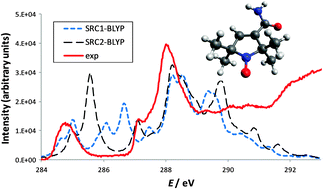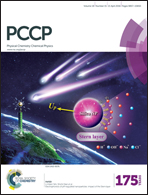An experimental NEXAFS and computational TDDFT and ΔDFT study of the gas-phase core excitation spectra of nitroxide free radical TEMPO and its analogues†
Abstract
Core-hole spectroscopy adds to the fundamental understanding of the electronic structure of stable nitroxide free radicals thus paving way for a sensible design of new analogues with desired functionalities. We study the gas-phase C 1s, N 1s and O 1s excitation spectra of three nitroxide free radicals – TEMPO and two of its amide-substituted analogues – using the experimental NEXAFS technique and the theoretical TDDFT and ΔDFT methods in the unrestricted setting. The short-range corrected SRC1-BLYP and SRC2-BLYP exchange–correlation functionals are used with TDDFT, and the standard B3LYP functional with ΔDFT. The TDDFT-based detailed spectral assignment includes the valence, mixed valence-Rydberg and Rydberg portions of the spectra from the onset of absorptions to the vicinity of the core-ionization thresholds. The relative overlaps between the experimental and TDDFT-modelled spectra are reasonably good, in the range of 0.7–0.8, 0.6–0.8, and 0.7–0.8 for the C 1s, N 1s, and O 1s spectra, respectively. The extent of spin contamination within the unrestricted framework and its effect on the accuracy of the calculated excitation energies and dipole intensities are discussed in detail. It is concluded that, despite the sizeable spin contamination, the presently used methods are capable of predicting the core-excitation spectra of comparatively large free radical species fairly reliably over a wide spectral range.


 Please wait while we load your content...
Please wait while we load your content...